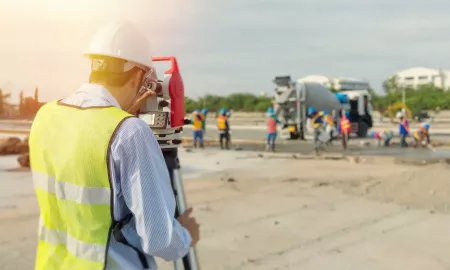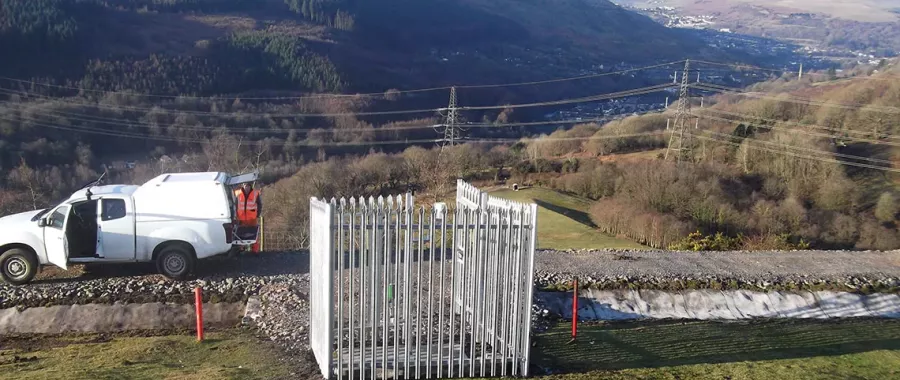Nick Slater, monitoring services director at SOCOTEC Monitoring, shares his insights into some of the benefits of asset monitoring, as well as the advantages of implementing automated monitoring over manual monitoring systems using a project for the Coal Authority as a case study.

Below, Nick shares his insights into some of the benefits of asset monitoring, as well as the advantages of implementing automated monitoring over manual monitoring systems using a project for the Coal Authority as a case study.
What is Asset Monitoring and why is it critical?
The term ‘asset management’ can be defined differently by each individual, yet essentially it relates to any plans and actions implemented in the maintenance, preservation or extension of an asset’s optimal performance throughout its lifespan.
Much of the UK’s infrastructure assets are ageing, this includes structures such as bridges, tunnels and buildings; transport networks such as rail, highways, canals, rivers and ports; utilities, dams and mines. These deteriorating assets require investment in maintenance to ensure that they continue to perform at optimal levels, allowing the continued safe use of these assets whilst simultaneously delivering value for the asset owners.
Asset monitoring provides critical intelligence about an asset’s condition throughout its lifecycle, supporting and informing decision making surrounding the behaviour of an asset.
The valuable knowledge gained allows an asset manager to:
- Prioritise maintenance activities - a move away from calendar-based maintenance can avoid the cost of unnecessary work
- Extend asset life and protect the investment
- Improve asset reliability and efficiency
- Support decommissioning and replacement planning
- Minimise downtime of assets due to unforeseen structural issues
- Reduce expenditure by identifying problems early on
- Record detailed incident feedback for safety and risk management reporting
- Predict asset failure and determine optimum time for intervention, and the most suitable course of action - non-critical assets can be fixed when they fail, and critical assets fixed when their condition begins to deteriorate
Manual Monitoring vs Automated Monitoring
During the system design and specification phase of an asset monitoring project, questions should be asked around whether the monitoring system should be manual or automated, or a mixture of the two. Both approaches have their merits and disadvantages, but recent developments in software, sensor and communication technologies have reduced costs and consequently increased the opportunity to monitor assets remotely.
When considering the viability of remote monitoring as an option, you shouldn’t just be focusing on price, however. Emphasis is better placed on the additional value an automated system can bring. Consideration needs to be given to requirements around data sampling frequency, data review frequency, site location, access and the safety critical nature of the monitoring, in addition to health and safety considerations for employees and environmental impact.
Improving Efficiencies for the Coal Authority
A project with the Coal Authority saw SOCOTEC Monitoring install monitoring systems at five disused tip sites in South Wales. With the remit of recording a range of measurements, including ground water levels and flow rates in drainage features across the sites, the data recorded needed to ensure that the client was granted better insight into the relationship and lag time between these parameters.
A manual system could have been used, but the client chose remote monitoring, with measurements automatically recorded using low-powered loggers. The resulting data is posted via a mobile network to SOCOTEC Monitoring’s web-based data visualisation software, Calyx OMS™, allowing the client to check online at any time to see the latest real-time data from site.
This automated approach is not a new proposition. However, in many similar instances this type of scheduled monitoring is being carried out manually. In a manual monitoring scenario, a lone worker would be tasked with travelling to a remote site, carrying an assortment of instruments with which to manually record measurements such as water level, ground settlement, crack propagation, or a host of other parameters too numerous to mention. This is common asset management practice across a range of sectors including rail, highways and utilities.
Had the five Coal Authority sites in South Wales been monitored manually, the impact on the environment and the health and safety of operatives would have been significant. Even in the case of monthly visits, over the course of a year we can estimate that a lone worker would spend in excess of 130 hrs on site at these remote locations, with an additional 150hrs of driving and, in the process, generate over 4 tons of carbon. Is this acceptable at a time when we have both a moral and legal obligation to minimise risk to employees and reduce our carbon footprint?
The advantages of automated monitoring over manual monitoring are clear for the asset manager, who can employ fewer personnel to monitor and maintain their asset - reducing costs - as well as the contractor carrying out the monitoring, with fewer lone worker site visits improving health and safety for employees and minimising their carbon footprint.
Whilst it remains true that there is value in an engineer attending site to appraise conditions, the suitability of time-based monitoring visits is called into question now more than ever before with the ready availability of automated asset monitoring systems.
If you have a geotechnical or structural monitoring requirement to discuss, please get in touch.
Want to find out more about SOCOTEC's asset monitoring services?

You might also like







Add new comment